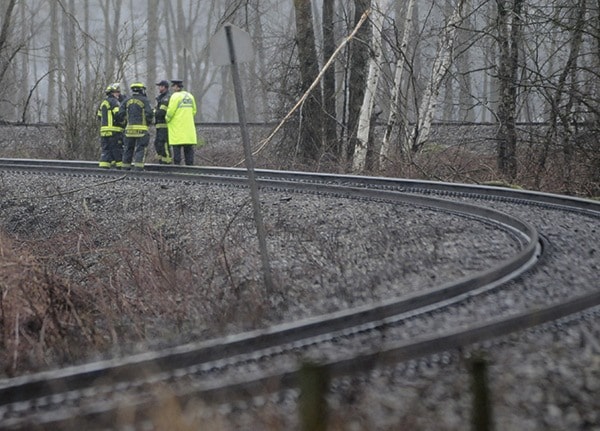A new procedure developed in the wake of the repeated shooting of a loose cow in 2015 by an Abbotsford Police officer has been used multiple times and proven useful for dealing with a range of livestock issues, Sgt. Judy Bird says.
In November of 2015, a cow on the loose and running through a busy part of Abbotsford was shot 24 times by an APD officer fearing for public safety if the animal hit a person or car. The incident prompted an outcry from citizens, and also led to a review triggered whenever a firearm is used in the line of duty.
Bird said the result of the review was a procedure that sees one of four emergency responders with experience handling livestock immediately called when an issue emerges. Those four include Bird, who has a farm, and three firefighters. Bird said the procedure has been used about twice a month since coming into place immediately following the cow shooting.
The most recent happened on Tuesday, when a westbound CN train struck and significantly injured two cows. A large-animal veterinarian was called and decided that one of the cows had to be euthanized on the spot, while the other could be taken to a slaughterhouse.
Bird said Wednesday that police still hadn't determined who owned the cattle.
Bird said that after the 2015 shooting, it was obvious a procedure needed to be developed, and that the large agriculture area of the city both illustrates the need for a response plan, and gives responders many resources to call upon when needing help.
"We understand the city's getting bigger and a lot of our officers aren't trained in handling livestock," Bird said. "It's a given that if you don't handle livestock regularly then you shouldn't be handling it in an emergency."
The policy was developed in conjunction with farmers, vets, animal haulers and other agriculture experts, along with the fire department.
Upon being called, Bird or one of the other on-call responders advise the person on the scene how to proceed while either making their way to the site themselves, or finding another stakeholder who can remedy the situation.
"Now it's a very directed response about who needs to be there," Bird said. "The police don't need to be there for everything."
The city has also developed a quick reference guide for staff dealing with livestock. They include things to do like: using just a few people to quietly and slowly move animals, acting calm, and trying to maintain a perimeter. There is also a list of actions that officers shouldn't take, include using sirens or lights around livestock, herding cattle or horses with vehicles, being in a hurry, and allowing a large number of people to become involved.
